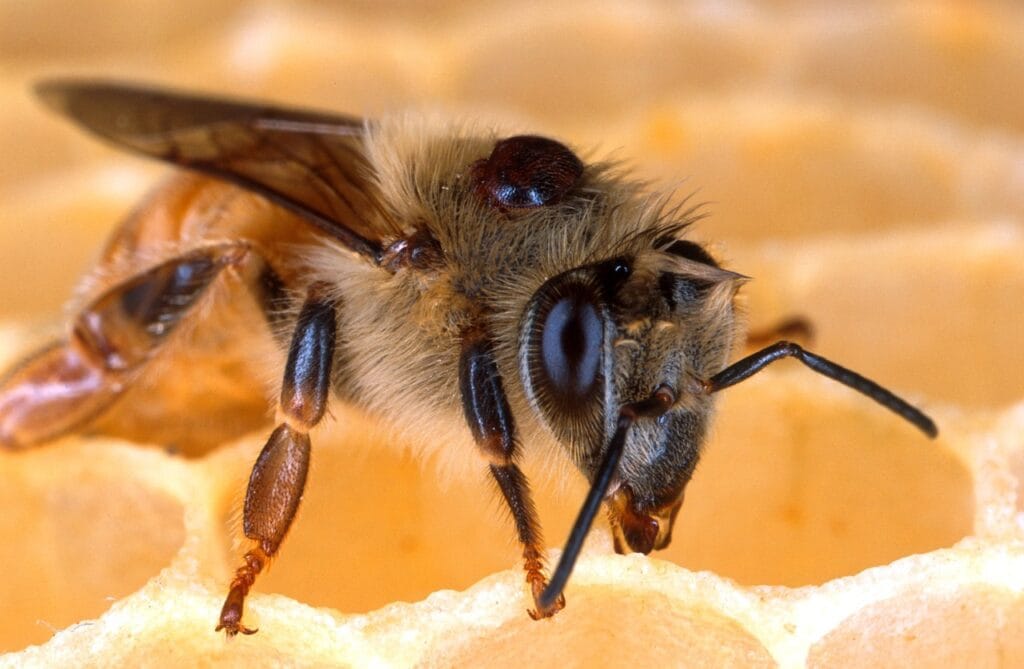Splitting a hive—dividing one strong colony into two—impacts the buildup of resources (like honey and pollen stores) and the strength of both resulting colonies in several important ways.
Immediate Effects After Splitting
- Reduced Population: Each new colony starts with fewer bees than the original, temporarily decreasing their collective foraging capacity[1][2][3].
- Lower Resource Reserves: Both splits will have fewer stored honey and pollen, as these resources are divided between the colonies[1][4].
- Delayed Brood Rearing: The new queenless colony must rear or accept a new queen. During this queenless period, no new eggs are laid, causing a brood gap of several weeks and fewer emerging workers in the short term[3][5].
Medium-Term Dynamics
- Resource Recovery Phase: Both the original and the new split need time to rebuild population and stores. This means the colonies focus energy on raising new brood and foraging rather than maximizing honey production initially[2][4].
- Feeding Needs: Newly split colonies, particularly those created from nucleus (nuc) colonies, often benefit from supplemental feeding (e.g., sugar syrup) to help accelerate buildup and ensure survival[1][6].
- Protection and Monitoring: Small splits are more vulnerable to robbing and stress, so beekeepers often use entrance reducers and monitor splits closely to ensure both grow strong enough to thrive[2][6].
Impact on Honey Production
- Reduced Surplus Honey (Year of Split): Two smaller colonies will generally produce less surplus honey than one strong, undivided colony due to lower population density and a temporary reduction in foraging force[1][4][5].
- Buildup for Future Years: If timed correctly and managed well, both splits can regain strength over the season. By the following year, each colony may be as strong as the original, leading to greater total honey output in subsequent seasons[1][7][4].
Timing and Management Tips
- Early Season Splits: Making splits early in the season gives both colonies maximum time to recover, build strength, and store resources before winter[1][7][6].
- Queen Introduction: Promptly providing a mated queen to the split can drastically shorten the recovery time by minimizing the broodless gap and helping the split rebound more quickly[3][2].
- Don’t Split Weak Colonies: Colonies with insufficient bees or stores should not be split; doing so weakens both and risks collapse[1][8].
Table: Effects of Splitting on Colony Strength and Resource Buildup
| Factor | Short-term Effect | Long-term Effect |
| Population | Decreases | Rebuilds with good management[1][7] |
| Honey/Resource Stores | Divided between colonies | Recovered if split early and fed[1][2] |
| Brood Production | Temporary gap in queenless split | Restarts with new queen[3][5] |
| Honey Output (current year) | Decreases | May increase next season[1][4][7] |
Summary
Splitting a hive temporarily weakens both resulting colonies, slowing down resource accumulation and overall colony strength in the near term.
However, with proper timing, queen management, and supplemental feeding, both colonies typically recover over the season and can be as productive—or more so—than the original by the following year.
The key is splitting only strong colonies, supporting them through the recovery period, and intervening if either split struggles to build sufficient stores or population[1][2][3][4].
⁂
- https://extension.usu.edu/beekeeping/learn/behavior/splitting
- https://www.perfectbee.com/beekeeping-articles/splitting-a-hive
- https://theapiarist.org/doing-the-splits/
- https://www.betterbee.com/instructions-and-resources/increasing-colony-through-split.asp
- https://beeculture.com/making-splits/
- https://www.foxhoundbeecompany.com/blogs/miscellaneous/best-practices-for-how-to-split-beehives
- https://www.blackmountainhoney.co.uk/post/when-should-i-split-my-beehive
- https://beemaster.com/forum/index.php?topic=41818.0



